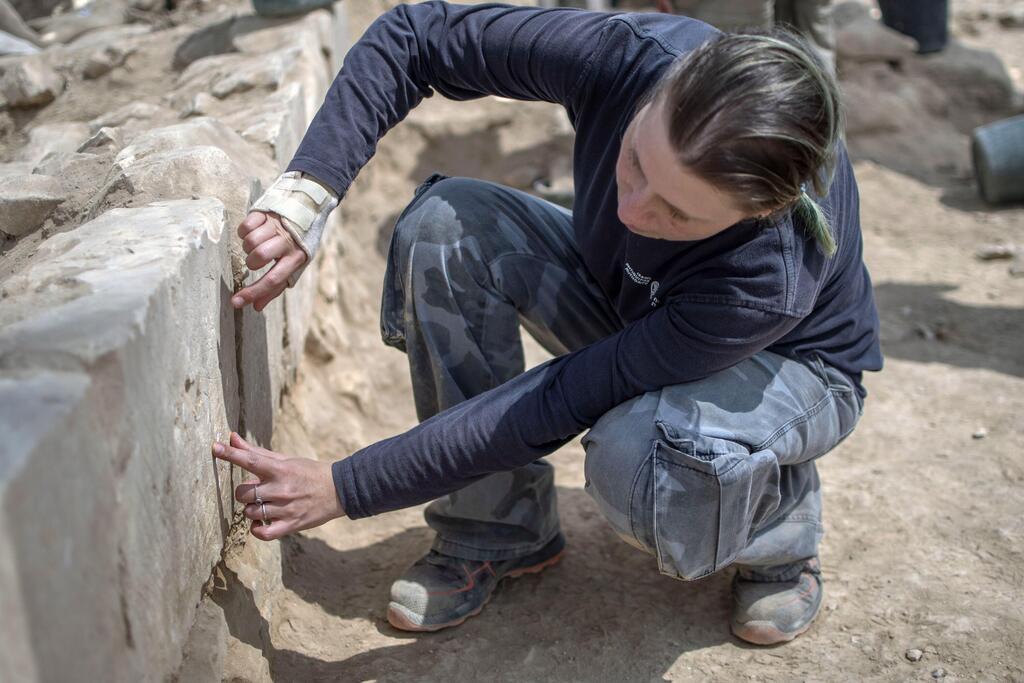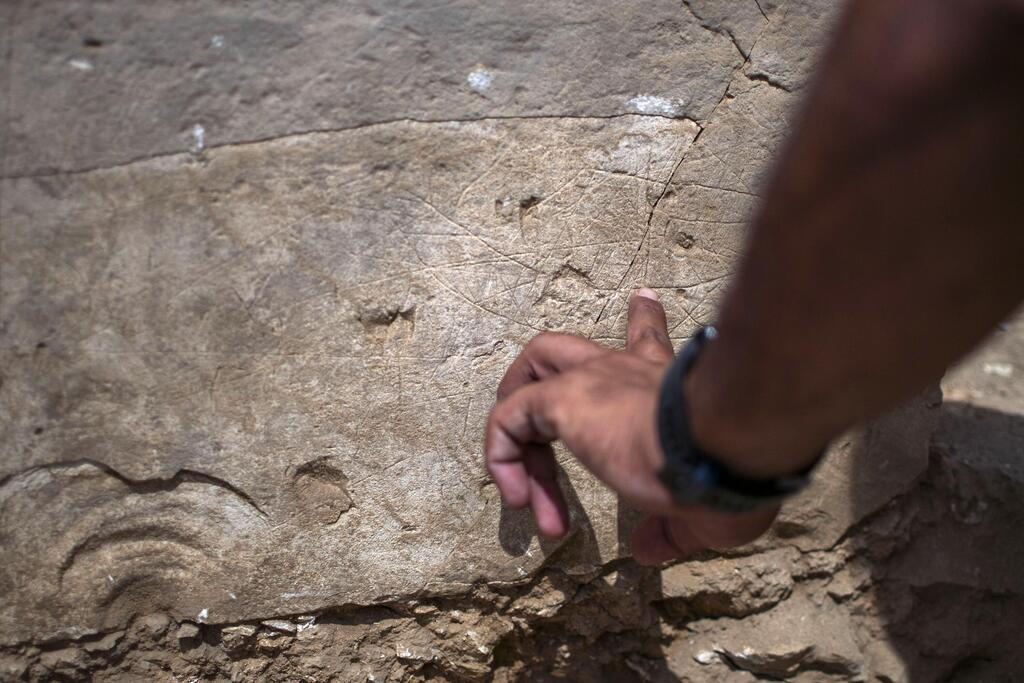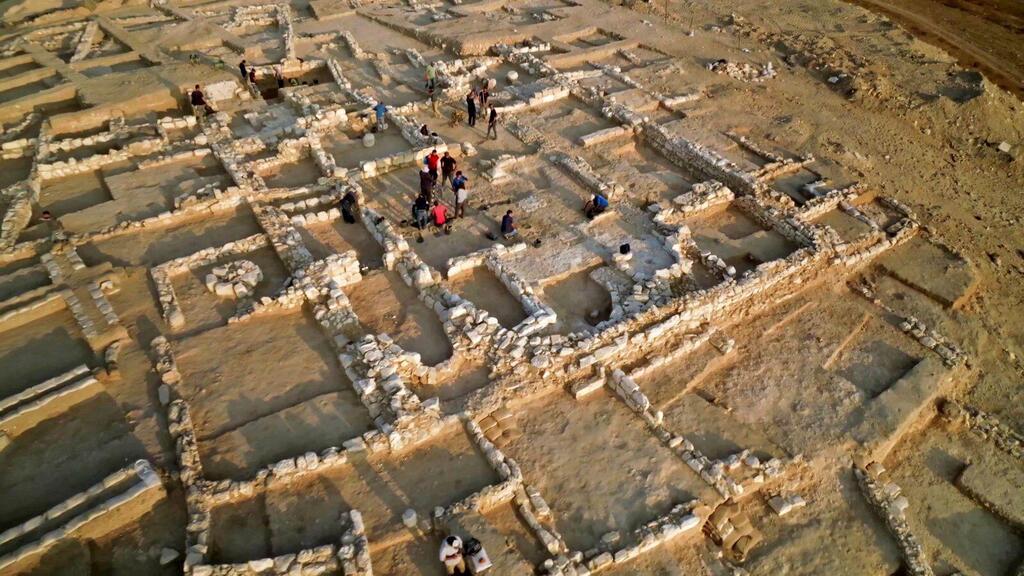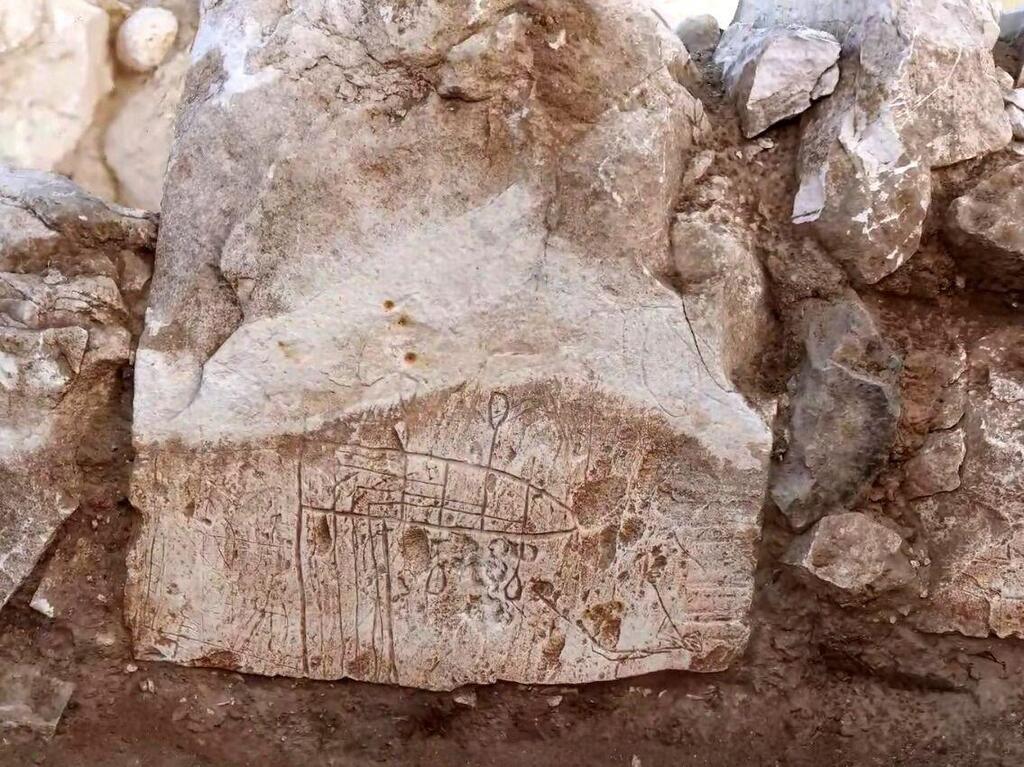In a remarkable archaeological find, the remains of a 1,500-year-old Byzantine church have been discovered south of Rahat, a Bedouin town in southern Israel. This historic site, adorned with intricate carvings of ships on its walls, was unearthed during an excavation by the Israel Antiquities Authority in preparation for a new neighborhood, funded by the Authority for Development and Settlement of the Bedouins.
"This discovery is like a postcard from Christian pilgrims who once sailed to the port of Gaza," explain the lead researchers, Oren Shmueli, Dr. Elena Kogan-Zehavi and Dr. Noe David Michael from the Israel Antiquities Authority, along with Professor Deborah Cvikel from the University of Haifa's Department of Maritime Civilizations.
Ships at Sea in the Northern Negev?
( Israel Antiquities Authority)
"The site we uncovered provides a vivid narrative of settlement in the northern Negev at the close of the Byzantine era and the dawn of the early Islamic period. Pilgrims who visited the church left their mark in the form of ship carvings. While the ship is an ancient Christian symbol, these carvings likely illustrate the actual vessels that brought the pilgrims to the Holy Land," the researchers said in a statement.
Located near an ancient Roman road that stretched from Gaza to Be'er Sheva, the Negev's largest city, the church served as a significant stop for pilgrims. "These travelers embarked on a sacred journey along Roman roads to revered Christian sites like Jerusalem, Bethlehem and the monasteries of the Negev mountains and Sinai. It's plausible their first stop after disembarking at the Gaza port was this very church, now revealed by our excavations. It’s about a half-day's walk from the port," the researchers suggest.
4 View gallery


Archaeologist Daria Eladjem points to a ship drawing discovered in the Rahat excavation
(Photo:Yoli Schwartz, Israel Antiquities Authority)
Cvikel describes one of the carvings: "One ship, etched with general lines, features a slightly pointed bow and oars on both sides. It might represent a top view of the vessel, although it appears the artist aimed for a three-dimensional effect. The lines at the stern may depict the wake created by the oars. Such carvings, left by Christian pilgrims as proof of their visit, are also found in the Church of the Holy Sepulchre in Jerusalem."
Another carving illustrates what seems to be a double-masted merchant ship. The main mast is without a sail but shows a small flag at the top. The forward mast, slightly tilted toward the bow, bears a sail known as an artemon. The detailed carving suggests it was made by someone well-versed in maritime matters. "Considering the ship is carved upside down, it's likely the stone was placed during construction without awareness of the carving or without concern for its orientation," add the researchers.
4 View gallery


The ship drawing discovered in the Rahat excavation
(Photo:Yoli Schwartz, Israel Antiquities Authority)
4 View gallery


Aerial view of the excavation site
(Photo:Yoli Schwartz, Israel Antiquities Authority)
Eli Escusido, director-general of the Israel Antiquities Authority, says that the find is significant.
"This extraordinary discovery of ship carvings in a Byzantine church in the northern Negev offers a fascinating glimpse into the world of Christian pilgrims who visited the Holy Land 1,500 years ago. It provides direct evidence of the ships they sailed and the ancient maritime culture. I invite all archaeology enthusiasts to the first Rahat conference, set to take place in early June, where numerous discoveries from our extensive excavation will be showcased."
The Rahat conference, free and open to the public, will be held on June 4.





